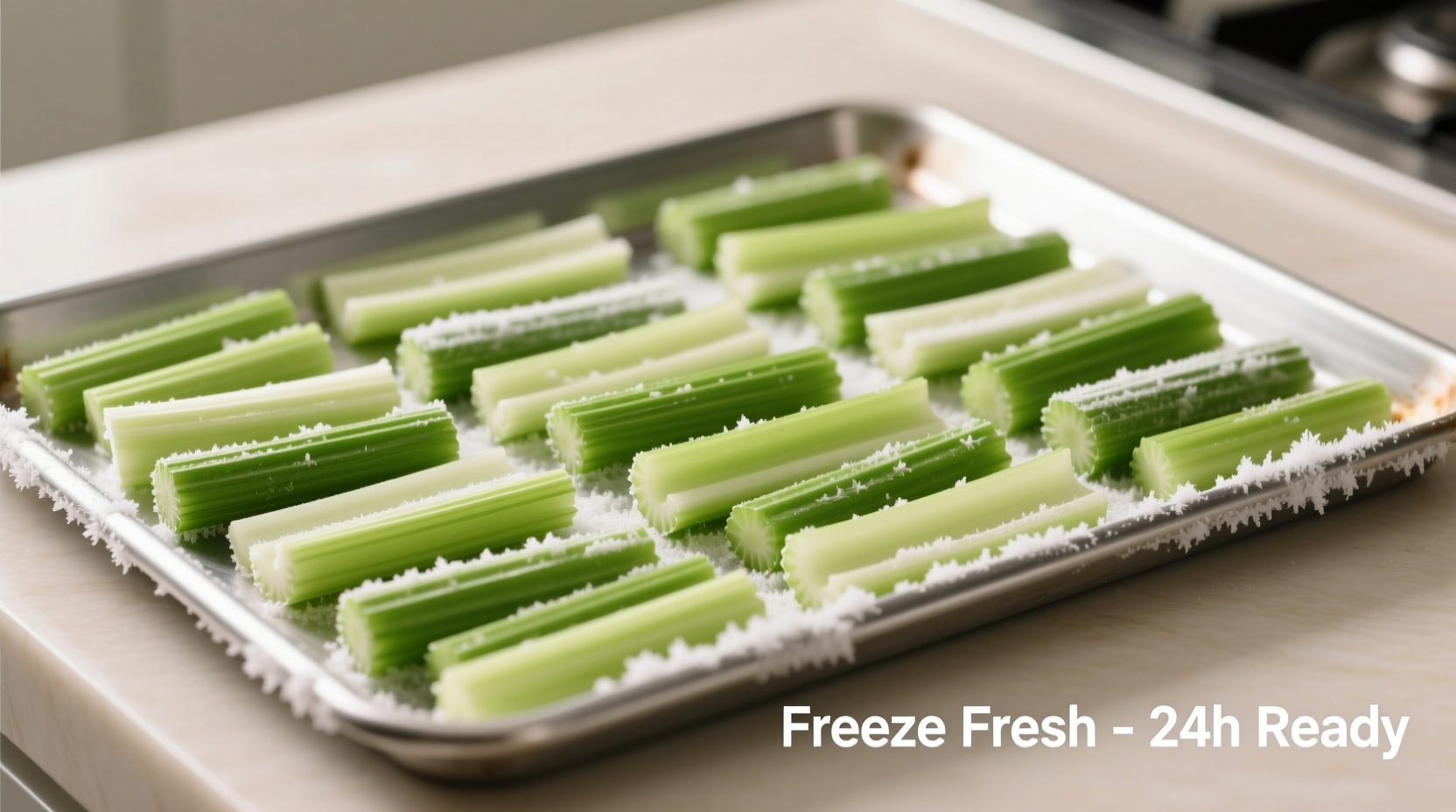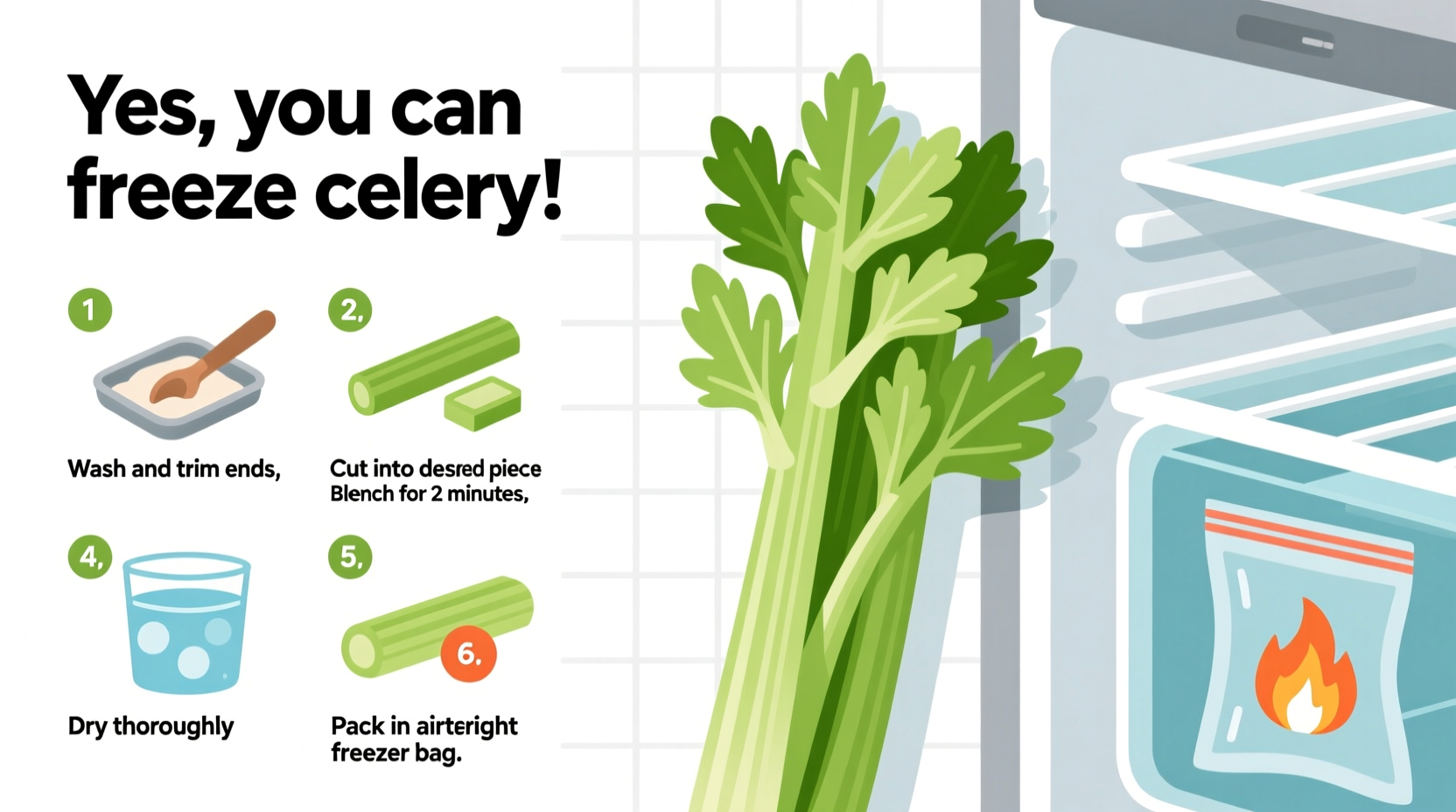Yes, you can freeze celery—but with important caveats. Properly frozen celery maintains flavor for 12-18 months but loses its crisp texture, making it ideal for cooked dishes like soups and stews but unsuitable for raw applications. This guide reveals the science-backed methods to maximize quality, storage timelines, and culinary applications.
The Science Behind Freezing Celery: Why Texture Changes
Celery's high water content (95%) and delicate cell structure explain why freezing alters its texture. When water freezes, ice crystals rupture cell walls, causing limpness upon thawing. This isn't spoilage—it's a physical change confirmed by USDA food scientists. The good news? Flavor compounds remain stable, making frozen celery perfect for cooked dishes where texture matters less.
3 Freezing Methods Compared: Which Works Best?
| Method | Best For | Texture After Thawing | Shelf Life |
|---|---|---|---|
| Blanching (3 mins) | Soups, stews, sauces | Maintains shape but soft | 18 months |
| Flash Freezing (chopped) | Quick cooking additions | Slightly limp | 12 months |
| Freezing in broth | Flavor bases | Very soft | 6 months |
Based on research from the National Center for Home Food Preservation, blanching is the gold standard. It deactivates enzymes that cause flavor degradation while minimizing texture damage. Skip this step, and your celery develops off-flavors within months.
Step-by-Step: Blanching Method for Maximum Quality
- Prep: Wash stalks thoroughly, trim ends, and cut into 1/2-inch pieces
- Blanch: Boil pieces for exactly 3 minutes (critical timing per USDA guidelines)
- Shock: Immediately plunge into ice water for 3 minutes
- Dry: Pat completely dry with clean towels (moisture causes freezer burn)
- Package: Use vacuum-sealed bags or rigid containers with 1/2-inch headspace
- Freeze: Lay flat until solid, then stack vertically to save space

Quality Timeline: When to Use or Discard
University of Minnesota Extension research shows frozen celery follows this quality curve:
- 0-6 months: Near-fresh flavor, slightly softened texture (ideal for most cooked dishes)
- 6-12 months: Noticeable flavor concentration, best for strongly seasoned dishes
- 12-18 months: Safe to eat but diminished flavor; use only in hearty stews
- 18+ months: Risk of freezer burn and off-flavors; discard
Freezer burn appears as white, dry patches caused by air exposure. While safe to eat, affected portions should be trimmed before use. Proper packaging reduces this risk significantly.
Culinary Applications: Making the Most of Frozen Celery
Don't make the common mistake of thawing frozen celery before cooking. Professional chefs like Antonio Rodriguez recommend these techniques:
- Soups & Stews: Add directly from freezer—no thawing needed
- Stocks: Use frozen pieces as flavor base without pre-cooking
- Smoothies: Substitute for ice cubes in savory green drinks
- Stuffings: Sauté frozen with onions for moisture control
Never use thawed celery in salads or as crudité—the texture won't recover. Reserve fresh celery for raw applications while using frozen for cooked dishes.
Better Alternatives When Freezing Isn't Ideal
Freezing isn't always the best solution. Consider these alternatives based on your needs:
- Short-term storage (2-3 weeks): Stand stalks upright in jar with 1 inch water, covered with plastic bag
- Flavor extraction: Simmer ends in broth for instant flavor base
- Dehydrating: Creates shelf-stable celery powder for seasoning (lasts 1 year)
According to Michigan State University's food preservation studies, dehydration preserves more volatile flavor compounds than freezing, making it superior for seasoning applications.











 浙公网安备
33010002000092号
浙公网安备
33010002000092号 浙B2-20120091-4
浙B2-20120091-4